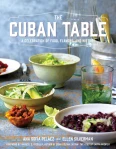
The weather is defrosting, but I spent Sunday half inside my freezer where I found the nearly forgotten bag of moras. Also called Andean blackberries, moras are a little more tart, firmer, and brighter than the blackberries commonly found in the US. I’d picked them up in an amazing Latin American market in Jackson Heights. Well-stocked with incredible variety but hard to get to, I brought back as much as I could carry. A few months later, I’ve barely made a dent in the frozen guavas, jarred loroco, or guasca leaves I stockpiled. I was looking to change this and remembered a dessert my friend’s mother, Mari Ines, made when she was teaching me how to make ajiaco Bogotano. In the time it took her to finish the ajiaco, she simmered the berries in syrup and served them with queso fresco. After calling Mari Ines for the recipes and ratios, I quickly made it for friends that night. There are so many things I’m looking forward to this summer, but in these in between days, it felt good to take advantage of what I already had. Read more
 Winter may feel endless just now but the season for red pomelos is way too short. Only a few markets in my neighborhood carry them and I all but missed them last year. Sweeter than other varieties with a thick white pitch or albedo, pomelos are perfect for making dulce de toronja and I‘d been waiting all year for them to come back around. Read more
Winter may feel endless just now but the season for red pomelos is way too short. Only a few markets in my neighborhood carry them and I all but missed them last year. Sweeter than other varieties with a thick white pitch or albedo, pomelos are perfect for making dulce de toronja and I‘d been waiting all year for them to come back around. Read more









